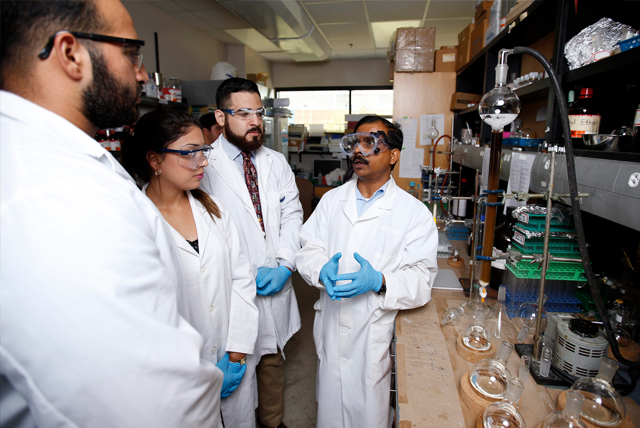Document Type
Article
Publication Date
2-26-2023
Abstract
Electrocatalysis has become an important topic in various areas of research, including chemical catalysis, environmental research, and chemical engineering. There have been a multitude of different catalysts used in the electrocatalytic reduction of CO2, which include large classes of materials such as transition metal oxide nanoparticles (TMO), transition metal nanoparticles (TMNp), carbon-based nanomaterials, and transition metal sulfides (TMS), as well as porphyrins and phthalocyanine molecules. This review is focused on the CO2 reduction reaction (CO2RR) and the main products produced using TMS nanomaterials. The main reaction products of the CO2RR include carbon monoxide (CO), formate/formic acid (HCOO−/HCOOH), methanol (CH3OH), ethanol (CH3CH2OH), methane (CH4), and ethene (C2H4). The products of the CO2RR have been linked to the type of transition metal–sulfide catalyst used in the reaction. The TMS has been shown to control the intermediate products and thus the reaction pathway. Both experimental and computational methods have been utilized to determine the CO2 binding and chemically reduced intermediates, which drive the reaction pathways for the CO2RR and are discussed in this review.
Recommended Citation
Parsons, Jason, and Mataz Alotaibi. "The application of transition metal sulfide nanomaterials and their composite nanomaterials in the electrocatalytic reduction of CO2: a review." Applied Sciences 13, no. 5 (2023): 3023. https://doi.org/10.3390/app13053023
Creative Commons License

This work is licensed under a Creative Commons Attribution 4.0 International License.
Publication Title
Applied Sciences
DOI
10.3390/app13053023



Comments
© 2023 by the authors. Licensee MDPI, Basel, Switzerland.